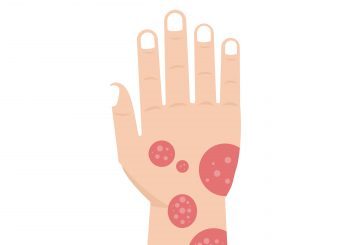
Antimalarials, particularly hydroxychloroquine, may be useful for cutaneous disease. However, hydroxychloroquine comes with its own common side effects, include skin rashes. In a recent study published in JAMA Dermatology, researchers aim to assess if skin eruptions that develop during hydroxychloroquine sulfate use are associated with autoantibodies in dermatomyositis.
Patients with dermatomyositis with anti-small ubiquitinlike modifier 1 activating enzyme autoantibodies appear to be at increased risk of developing a hydroxychloroquine-associated skin eruption https://t.co/BilhGOdMyx pic.twitter.com/rGSgyJ7pUG
— JAMA Dermatology (@JAMADerm) August 27, 2018
New evidence for how the dermatomyositis autoantibody can predict who gets skin eruptions from hydroxychloroquine! Disclaimer: Dr. Fiorentino is my clinical mentor and the first author, Paige Wolstencraft was recently one of our talented SubIs. #dermatology #medtwitter https://t.co/6q6syPfuHX
— Roxana Daneshjou MD/PhD (@RoxanaDaneshjou) August 30, 2018
This cohort study used 111 patients with dermatomyositis treated with hydroxychloroquine. Out of this number, 23 experienced an associated adverse cutaneous event. According to the study, in patients who had a skin eruption, 7 had anti–small ubiquitinlike modifier 1 activating enzyme autoantibodies vs 7 of 88 patients without a skin eruption. However, none of those with a skin eruption had anti–melanoma differentiation-associated gene 5 autoantibodies vs 15 of those without a skin eruption, and associations were significant in multivariable models.
https://twitter.com/Derm101Team/status/1034131012064894976
“Adverse skin reactions to hydroxychloroquine are relatively common in a US cohort of patients with dermatomyositis,” the researchers concluded. “Our data suggest that pathophysiologic differences exist between autoantibody subsets in dermatomyositis.”
Check out an article on if there is a connection between vitamin D and rheumatological issues.
SOURCE: JAMA Dermatology







 © 2025 Mashup Media, LLC, a Formedics Property. All Rights Reserved.
© 2025 Mashup Media, LLC, a Formedics Property. All Rights Reserved.